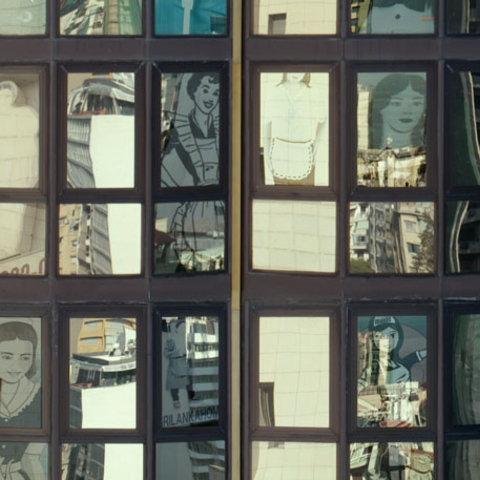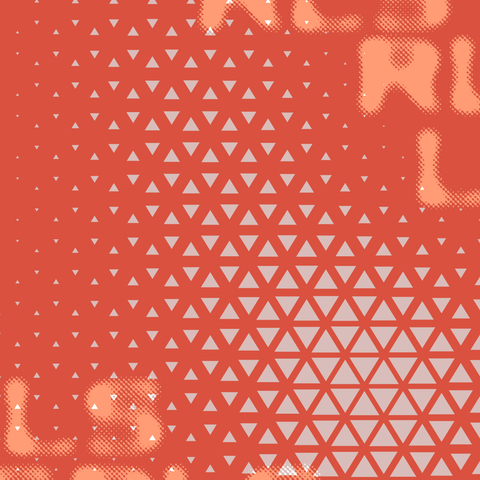From the Margin to the City
Documenting Lebanon’s Informal Bus System as a Tool for Social Change
If, as French intellectual Bruno Latour develops in Où Atterir, Comment s’orienter en politique, describing our territories through the inequalities that traverse them is the first step towards social justice, then keeping the Lebanese bus system in the shadows only further deepens mobility inequalities in our cities. How can we explain the partial rhetorical invisibilization that permeate Lebanon’s informal mobilities? How can we trigger a shift towards more ethical discourses regarding our transport system? To what extent is the mapping and documenting of the system the first necessary step towards efficient and socially fair urban planning?
Sticking to the city we find
Invisible and ubiquitous, tolerated yet unacknowledged, legitimate yet unlegitimized: the Lebanese bus system navigates in constant tension between polar sets of values, which makes it inherently informal. The Lebanese State owns and operates between 20 and 40 buses in Lebanon. The rest of the system that meets the mobility needs of the majority of the lowest class population is privately operated. This network is considered a gap-filler system and stems from endogenous characteristics of a State in socio-economic crisis, such as lack of law enforcement, State deficiency and unemployment. Researchers such as P. Samaha and Farajalla et al. have highlighted the system’s dynamism and resilience. Yet, it is discarded by the majority of citizens and public authorities because they consider it inadequate. By doing so, not only do they marginalize the – already vulnerable – population that uses it and operates it, but they illustrate a paradox that irrigates the experience of urban planners when confronted to informal modes of urban practices, to use C. McFarlane’s terminology: the difficulty of sticking to the city they find.
Who are we planning for?
Indeed, the intricate web of urban mythologies of violence, opacity and chaos that surrounds Lebanese buses stems partly from an elitist projection of what public transportation should look like. The “inadequate” nature of the system is usually assessed by a part of the population that neither engages with it nor uses it. The “more adequate” solutions that they propose (a BRT, wifi in buses, credit card payment, etc.) are more adequate for them; and do not take into accounts the needs of the lowest class population that actually uses the buses, and will most likely be priced out in this process of reckless formalization. Recognizing the system is however more than solely an ethical matter: it re-frames the efficiency of transit urban planning. Closing our eyes on the operating system creates ubuesque planning situations, the most recent to date being the unlocking of 2.3 billion dollars of funding mainly to implement a Bus Rapid Transit (BRT) between Beirut and Tabarja following the CEDRE conference on April 6th, 2018. This gigantic and costly infrastructure has been planned without taking into account the dozens of informal buses that serve the same route, and that will continue operating in parallel to meet the mobility needs of the population that cannot afford a ticket on the BRT. Working with the existing system and integrating it into a dedicated lane for example, would have been a socially fairer, more practical and far less costly alternative. Thus, researching and acknowledging our transit and the mobility inequalities that shape the Lebanese urban experience is the first necessary step towards inclusive and efficient urbanism, that aims at drafting solutions for all of its dwellers. Documenting the informal system re-anchors our thinking into our local territories and the rights of the people that shape them through their everyday practices. This descriptive approach is a prerequisite to avoid falling in the trap of elite projection, and protect the rights of the most vulnerable populations to plan a socially cohesive transit system. This discourse shift is a crucial stake to reconcile the reality on the ground and the narratives we use to apprehend it.
Instrumentalizing the unmappable
The reluctance from public authorities to bridge the gap between discourse and reality stems from two main factors. First of all, it is more difficult to gather information on informally operating networks, due to their increased flexibility and sometimes illegal status. However, the information gap is not a mere matter of practicality: it is rather a deliberate strategy of refusing to document the system in order to delegitimize it. The trope of an unmappable system operating in the background of the city participates in the rhetoric of invisibilization. It bears political consequences: the stigmatization of the only operating network and the alternative practices of the city that shape it every day. It also further reinforces car culture and traffic congestion, which have become so deeply entrenched in Lebanon’s everyday urban fabric that they are part of the evocative imagery used to describe its capital, Beirut. To palliate this lack of data, initiatives of participative cartography have emerged all around the MENA region to document informal transportation systems by engaging with them: Transport for Cairo in Egypt, Ma’an Nasel in Jordan, and the Bus Map Project in Beirut. These mapping initiatives go beyond activism: by striving to replace fear of the unknown with curiosity, they broaden our understanding of what we consider public transportation, and what we consider public space. Documenting the system is also a powerful tool to avoid romanticizing the assets of the system, by facing the inequalities that traverse it: disastrous working conditions for drivers, pollution due to ancient vehicles, etc. Planners cannot expect to correct inequalities they have not assessed in the first place. Knowing what is and what is missing is the first step to stir up conversations about the inequalities lived by the operators, the riders and even the non-riders; by identifying dead angles and areas that need to be better connected, mapping is a powerful vector not only to document inequalities, but to balance them out.
Curating new practices of the territory
In Mythologies, Roland Barthes assesses that “the very end of a myth is to immobilize the world”. Striving to debunk the imaginaries and tropes of chaos and fawda that surround Lebanon’s bus system means opening our eyes on new assets and ways to live our cities differently. Unlocking these new readings and writings of Lebanese urban landscapes brings to light new paradigms to understand how our cities are lived and practiced. It emphasizes the creativity of operators that were able to provide a public service where the State failed, and allows to explore new ways to navigate our territories. Recognizing these incremental urban knowledges can only benefit urban planners, to help them draft more comprehensive transit solutions that balance out the striking inequalities carried by the system of transport, and take into account the rights and needs of all of Lebanon’s dwellers. At the etymological root of ‘to document’ lies latin verb docere, ‘to teach’. Pushing for a documentation of the existing system, or participating in mapping it collectively, teaches us to open our eyes on alternative urban patterns. It gives us freedom to apprehend our cities differently, as palimpsests that we become enabled to read and write in all their intricate layers: by being fully aware of what is, to determine new paths to reshape it collectively.
The right to the city is far more than the individual liberty to access urban resources: it is a right to change ourselves by changing the city. It is, moreover, a common rather than an individual right since this transformation inevitably depends upon the exercise of a collective power to reshape the processes of urbanization. The freedom to make and remake our cities and ourselves is, I want to argue, one of the most precious yet most neglected of our human rights.



